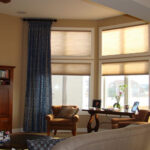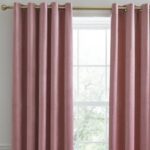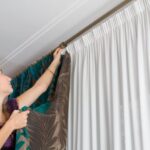Shutters, blinds, and curtains are your window decoration options. But how do you pick these fashionable window treatments? Which is ideal for your home and needs? In this article, we’ll examine shutters, window blinds, and window curtains to help you choose.
We’ll consider privacy, light management, insulation, aesthetics, and more. Learn about the distinctions between these three window coverings to make the best choice for your home.
Shutters
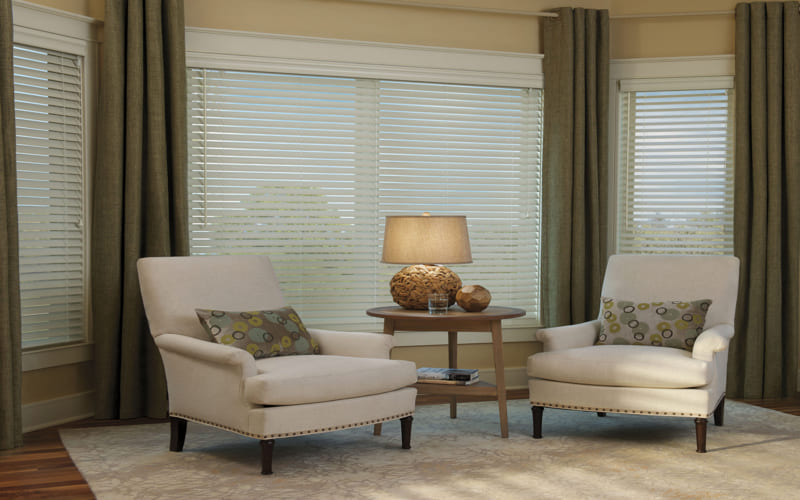
Window coverings, known as shutters, have a frame with horizontal slats that may be adjusted to limit the amount of light that comes in and the level of seclusion that is created. Here are some home shutter pros and cons:
Pros of Shutters:
- Great for privacy—Shutters totally close windows. It makes them great for privacy.
- Excellent light control—the adjustable slats let you regulate all room lighting. Closed slats block light, whereas open ones let it in.
- Stylish aesthetic – Shutters’ traditional, elegant design enhances every decor. They come in many colors and stains.
- Long-lasting – Shutters are a durable window covering. They are made of durable wood, imitation wood, or vinyl.
- Low maintenance – Shutters don’t need to be washed as often as curtains do. Only periodic wiping is needed.
- Can insulate windows – Closed shutters generate an air pocket.
Cons of Shutters:
- Can be expensive – The cost of shutters tends to be higher than blinds or curtains. The material, custom fit, and installation can drive up costs.
- Not ideal for all window types – Shutters may not work as well for unusually shaped windows. The slats need to open/close properly.
- Can block outside views – With shutters completely closed, you lose your view outside. It may not work well in rooms where you want to maintain a view.
- Difficult to install – Getting a precise custom fit can require expert installation. It adds to the total costs.
Blinds
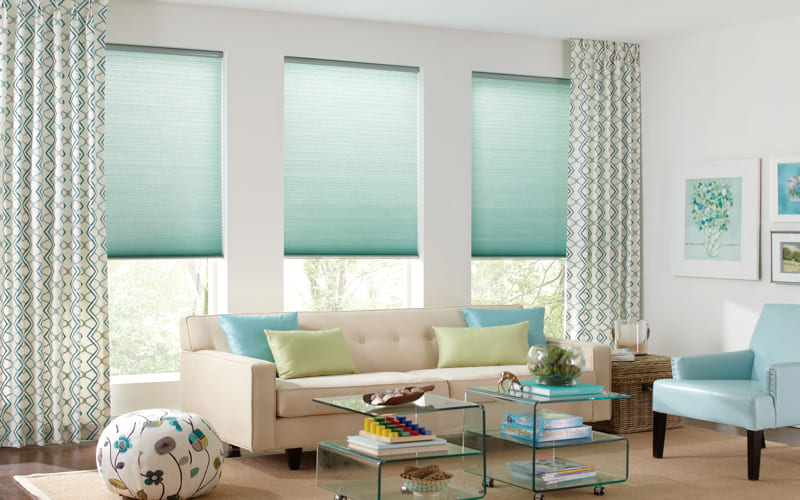
Blinds are another popular window covering. They consist of horizontal or vertical slats made of vinyl, wood, or faux wood. Here are the pros and cons of using window blinds:
Pros of Blinds:
- Good control over light and privacy – The slats may be adjusted to change the amount of light and privacy as desired. Tilting them in one direction lets light in the other blocks it.
- Different materials and styles—Blinds come in vinyl, wood, imitation wood, metal, and others. There are vertical, small, cordless, and other styles.
- Budget-friendly – Vinyl and imitation wood blinds are usually economical. Even wood blinds are cheaper than shutters.
- Easy installation—Blinds are ready to install. Mounting most is simple without expert help.
- Fit any shape window – Blinds can be customized to fit almost any unusual window size and shape.
- Offer some insulation: Shut blinds can create an air pocket that helps insulate windows, just like shutters do.
Cons of Blinds:
- Less durable than shutters – Blinds are generally not as sturdy and long-lasting as shutter products. Their lifespan is usually shorter.
- Can look cheap if low quality – Low-end vinyl blinds tend to look cheap, while higher quality materials like real wood look more upscale.
- Yet still block views – With the slats fully closed, blinds still obstruct your outward view from windows.
- Can be a safety hazard for kids – Long cords used to open and close blinds can be a strangulation risk for young children.
Curtains
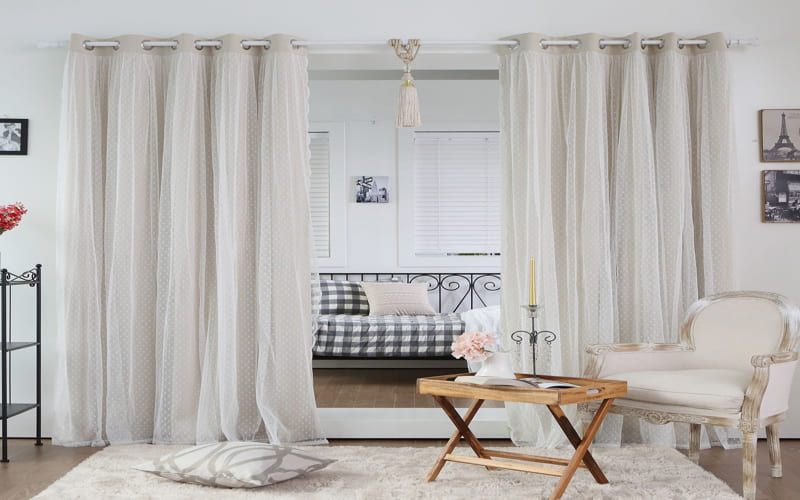
The most frequent type of window treatment is the use of curtains. They are available in a dizzying array of designs, patterns, colors, and materials to choose from. The following is a list of the advantages and disadvantages of utilizing curtains in your home:
Pros of Curtains:
- Soften and enhance room décor – An abundance of curtain styles allows you to match your room’s décor easily. Colors and patterns can complement furnishings.
- Help insulate windows – Layered curtains create air pockets that add insulation around windows. It helps reduce heat/cold transfer.
- Easy to install – Curtains mount easily on standard curtain rods or hang from clips. Most do not require professional installation.
- Inexpensive option – While high-end designer curtains can be pricey, basic curtains are very budget-friendly. Less expensive than shutters or blinds.
- Let light through – Light fabrics allow daylight to filter into rooms while still providing some privacy.
- Easy to open/close – Curtains can be quickly opened or closed as needed. Easier than adjusting the shutter or blind slats.
- Maintain views – Transparent curtains don’t obstruct views outdoors. You can see through to the exterior.
Cons of Curtains:
- Need frequent Curtains cleaning tend to collect dust and need more frequent washing than shutters or blinds.
- Less privacy than shutters/blinds – Sheer or lightweight curtains allow people to see into your home much more than solid shutters or blinds.
- Can blow around – Curtains flutter and blow around in the breeze when windows are open. Shutters and blinds stay firmly in place.
- Not ideal for wet areas – Fabrics and moisture from bathrooms and kitchens don’t mix well. Other options are better suited for these spaces.
- Less durable – Curtains are typically made from softer, flexible fabrics. They deteriorate faster than hard materials like wood or vinyl.
Conclusion
The right window treatments can greatly enhance the look and functionality of your home. Now that you know the pros and cons of shutters, blinds, and curtains, you can determine which option best suits your needs. Consider the room’s uses, overall aesthetics, natural light needs, privacy level, and your budget. It will guide you to make the optimal choice from these three top window covering options.


